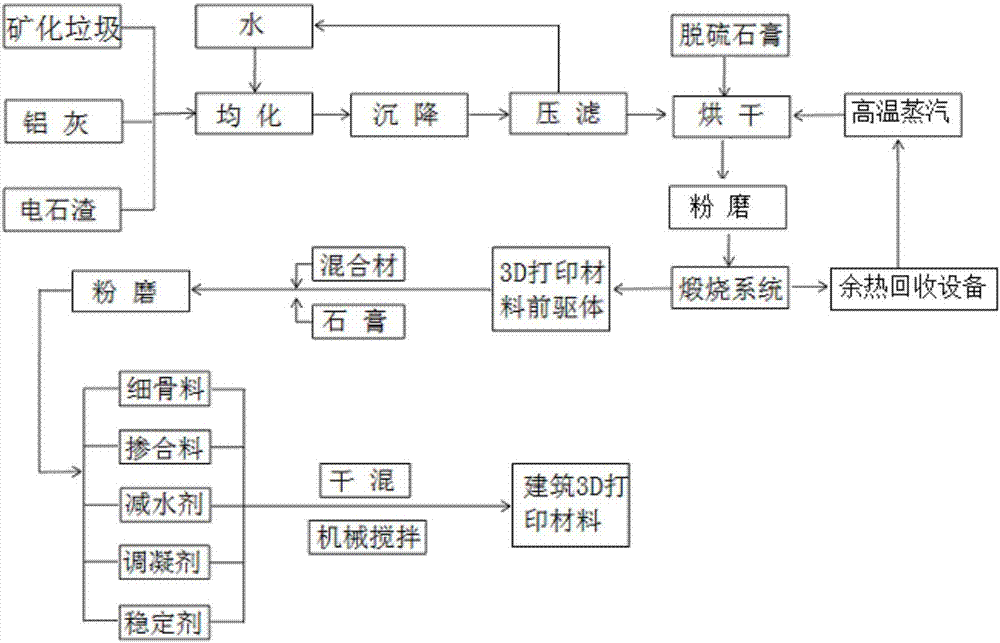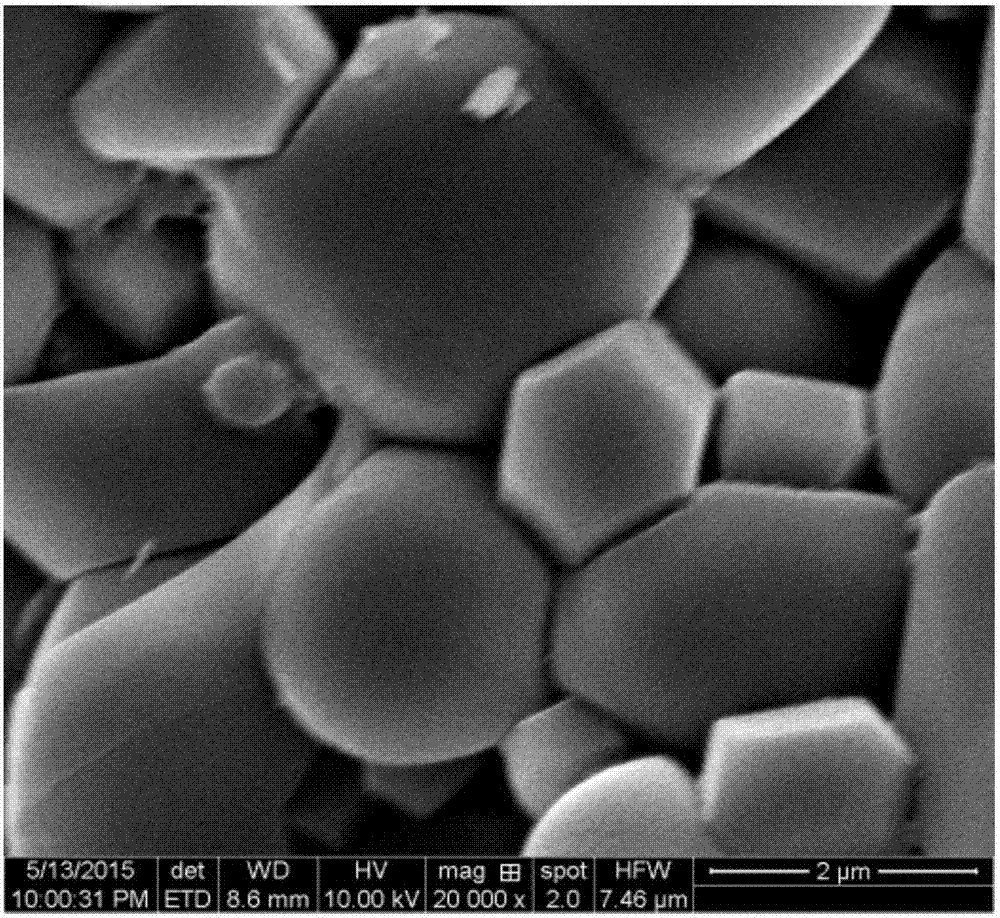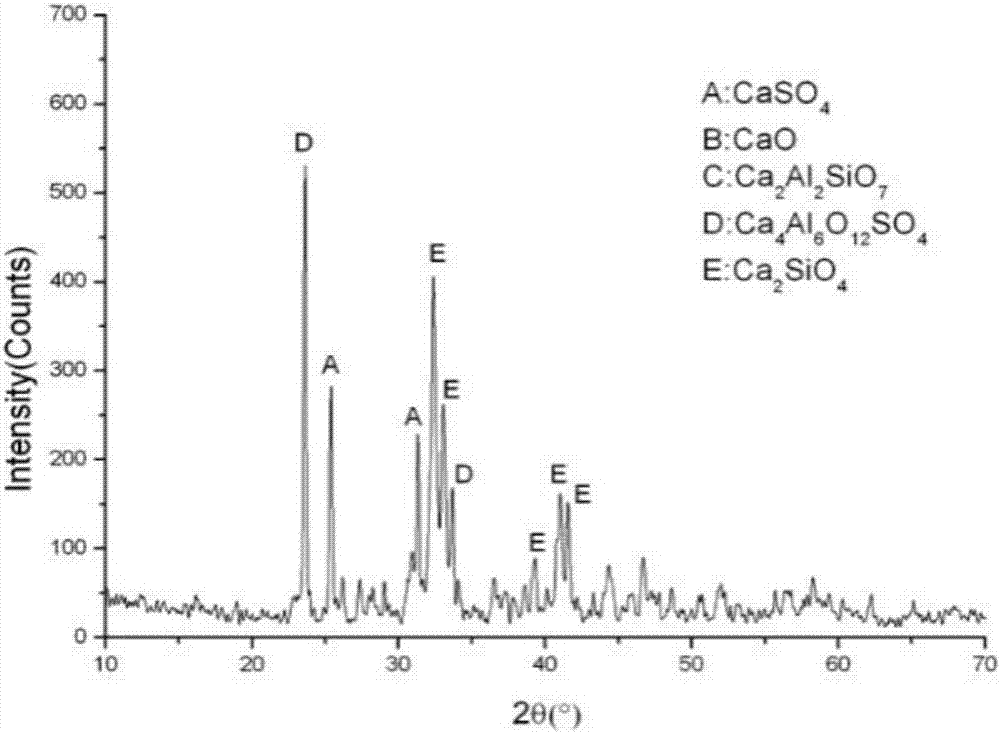System and method for preparation of building 3D printing material from mineralized refuse
A technology of 3D printing and mineralized waste, which is applied in the direction of additive processing, sustainable waste treatment, solid waste management, etc., can solve the problems of high cost and inability to use large-scale construction 3D printing materials, so as to reduce consumption and save process, waste reduction effect
- Summary
- Abstract
- Description
- Claims
- Application Information
AI Technical Summary
Problems solved by technology
Method used
Image
Examples
Embodiment 1
[0050] like figure 1 As shown, the raw pulp mineralized garbage, aluminum ash and calcium carbide slag are mixed and then hydrated. The solid-to-liquid ratio is 1:4 to obtain an alkali-containing slurry. The waste heat of the kiln gas recovered by the waste heat equipment is used to heat the alkali-containing slurry to make the alkali-containing slurry The temperature of the alkali slurry is maintained at 60-70°C, so that the alkali content of the original mineralized waste is reduced to below 10% of the original value. The moisture content of the batching slurry is 43% (wt%) after pressure filtration, and after natural drying, the moisture content is reduced to 18%. % (wt%). The dried raw meal is sent into the dryer. Based on the dried solid matter, calcium carbide slag accounts for 36.66 parts by weight, desulfurized gypsum accounts for 17.64 parts by weight, mineralized waste accounts for 7.86 parts by weight, and aluminum ash accounts for 37.8 parts by weight. After dryi...
Embodiment 2
[0062] The raw pulp mineralized garbage, aluminum ash and calcium carbide slag are mixed and then hydrated with a solid-to-liquid ratio of 1:3 to obtain an alkali-containing slurry. The alkali-containing slurry is heated by the waste heat recovered from the kiln gas by the waste heat equipment to make the alkali-containing slurry temperature Maintain at 60-70°C to reduce the alkali content of the original mineralized waste to less than 10% of the original value. The moisture content of the batching slurry is 40% (wt%) after pressure filtration, and the moisture is reduced to 18% (wt%) after natural drying. %). Send the dried raw meal into the dryer. Based on the dried solid matter, calcium carbide slag accounts for 38.39 parts by weight, desulfurized gypsum accounts for 14.84 parts by weight, mineralized waste accounts for 12.34 parts by weight, and aluminum ash accounts for 38.39 parts by weight. 34.43 parts by weight. After drying and grinding, it is calcined in a kiln, the...
Embodiment 3
[0064] The raw pulp mineralized garbage, aluminum ash and calcium carbide slag are mixed and then hydrated with a solid-to-liquid ratio of 1:3 to obtain an alkali-containing slurry. The alkali-containing slurry is heated by the waste heat recovered from the kiln gas by the waste heat equipment to make the alkali-containing slurry temperature Maintain at 60-70°C to reduce the alkali content of the original mineralized waste to less than 10% of the original value. The moisture content of the batching slurry is 40% (wt%) after pressure filtration, and the moisture is reduced to 18% (wt%) after natural drying. %). The dried raw meal is sent into the dryer. Based on the dried solid matter, calcium carbide slag accounts for 42.39 parts by weight, desulfurized gypsum accounts for 18.54 parts by weight, mineralized waste accounts for 16.34 parts by weight, and aluminum ash accounts for 40.43 parts by weight.
[0065] After drying and grinding, it is calcined in a kiln at a temperatur...
PUM
| Property | Measurement | Unit |
|---|---|---|
| Compressive strength | aaaaa | aaaaa |
| Compressive strength | aaaaa | aaaaa |
Abstract
Description
Claims
Application Information
 Login to View More
Login to View More - R&D
- Intellectual Property
- Life Sciences
- Materials
- Tech Scout
- Unparalleled Data Quality
- Higher Quality Content
- 60% Fewer Hallucinations
Browse by: Latest US Patents, China's latest patents, Technical Efficacy Thesaurus, Application Domain, Technology Topic, Popular Technical Reports.
© 2025 PatSnap. All rights reserved.Legal|Privacy policy|Modern Slavery Act Transparency Statement|Sitemap|About US| Contact US: help@patsnap.com



